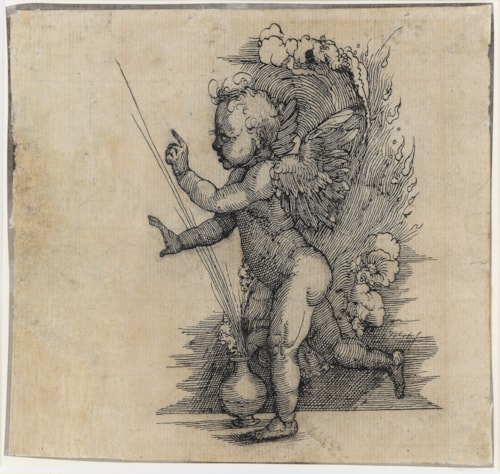
Sebald BEHAM
Nuremberg 1500 - Frankfurt-am-Main 1550
Biography
Sebald Beham and his younger brother Barthel, together with Heinrich Aldegrever, Georg Pencz and other German printmakers active in the first half of the 16th century, were known as the ‘Little Masters’, due to the small size of much of their work. Both Beham brothers are thought to have studied with Albrecht Dürer in Nuremberg, and Sebald produced his first prints in 1518; engravings which were strongly indebted to the example of Dürer. Barthel Beham’s first prints date to around 1520, by which time Sebald had also taken up etching, again probably inspired by Dürer. Sebald also worked as a designer of stained glass panels, with considerable success. In 1525, however, both Beham brothers were expelled from Nuremberg on the grounds of sedition, and Sebald spent much of the next ten years working in Augsburg, Ingolstadt, Munich (where a woodcut was commissioned from him by the Emperor Charles V) and Mainz, where he entered the service of the archbishop, Cardinal Albrecht of Brandenburg, for whom he painted The Story of King David, now in the Louvre.
Sebald Beham eventually settled in Frankfurt around 1530, taking up citizenship there in 1540. He developed a close collaboration with Christian Egenolph, founder of the first printing press in Nuremberg, for whom he illustrated several religious books. Beham produced a large number of prints of ornamental and decorative designs, many of which were reproduced by goldsmiths, while other prints by him were copied by later artists. He is also known to have received commissions for manuscript illuminations, including two prayer books for Cardinal Albrecht, completed in 1531. In his lifetime, Beham produced some 270 engravings and etchings, and designed over a thousand woodcuts.


